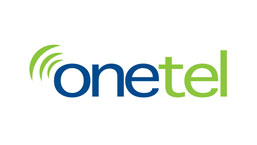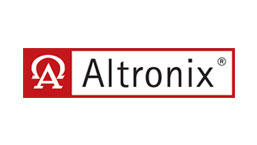FCC Proposes Fines for RF Radiation Violations
By Lou Fiore, Chair, Alarm Industry Communications Committee
At our December 3, 2015 AICC meeting, AICC Counsel John Prendergast reported on FCC proposed fines for RF radiation violations on rooftops against two communications companies. This, of course, evoked concerns by some in attendance about these issues regarding the security industry’s use of cellular and private wireless data radio systems, such as AES-Intellinet, CRN Wireless and cellular devices used by the alarm industry. This concern could be relevant at both customer locations as well as rooftops where IP links and repeaters are located.
The bottom line is that because of their low power and duty cycle, it is virtually certain that most private wireless systems provided by AES-Intellinet and CRN Wireless meet all current FCC exposure requirements for protecting the general population, company employees or roof-top service personnel. Wireless system users should nonetheless review this matter as part of their equipment evaluation and purchase process. These data radios are compliant if used correctly, and in other cases, such as higher powered voice systems, relatively simple measures can render them compliant. Correct labeling of the radios and, for higher powered radios, proper RF warning signs can be important to guard against FCC violations.
The FCC rules require all licensees to comply with RF radiation exposure limits. These rules provide guidelines and procedures for licensees to evaluate the environmental effects of RF exposure from FCC regulated transmitters. These rules include Maximum Permissible Exposure (MPE) limits for electric and magnetic field strength and power density for transmitters operating from 300 kHz to 100 GHz. Most “premises-to-central station” wireless data devices operate in the 460 MHz private radio band and the 800 MHz and higher cellular bands, and are therefore subject to the MPE limits. MPE is defined as the electric and magnetic field strength to which a person may be exposed without harmful effect and with an acceptable safety factor. This is the limit set in a report issued by the FCC. There are two such criteria, one for the general public and another for alarm company installers, service personnel working on these systems and other contractors that may be working near the radio antennas (HVAC, etc.). MPE is computed as the average power level against an area of skin and is shown as milliwatts per a square centimeter (mW/cm2).
Based on information provided by the equipment manufacturers, the computations below are designed to size up the compliance of most private wireless radio system equipment operating on the designated central station “offset” frequencies under the FCC rules. As always, you will want to verify the compliance of your individual system, including how it is configured, with the manufacturer and your installation vendor.
The exposure limits for cellular equipment are more complicated and will be discussed in this forum at a later time, although it is safe to assume that cellular units, installed according to the manufacturers’ instructions, should also be safe for much of the same reasons.
In 1996, the FCC adopted new guidelines and procedures for evaluating environmental effects of RF emissions. The 1996 guidelines incorporate two tiers of exposure limits based on whether exposure occurs in an occupational or “controlled” situation or whether the general population is exposed in an “uncontrolled” situation. These categories were based on an FCC Report entitled “Evaluating Compliance with FCC Guidelines for Human Exposure to Radio Frequency Electromagnetic Fields”, also known as OET BULLETIN 65. In 2013, the FCC adopted clarifications to its RF rules, and proposed other rule changes aimed at a further tightening of these restrictions.
It should also be noted that under Rule Section 1.1307(b), a Private Land Mobile Radio Services operation is currently exempt from performing an RF compliance evaluation if it uses a building-mounted antenna, and its power is less than 1000 watts ERP. For a tower mounted antenna, it is exempt if the power is less than 1000 watts ERP, and the antenna is more than 10 meters above ground. The FCC has proposed to move away from these “categorical exemptions” toward a single formula to be calculated for each radio; but it is not known whether and how soon this rule change will be adopted. It also bears mention that, if the FCC determines that a rooftop or other location is generating excessive RF radiation, stations using that location can be dragged into the compliance effort if they contribute at least 5% to the RF environment of the site, even if they were exempt from measuring RF compliance.
The two tiers of exposure are defined below:
General population/uncontrolled exposure.
For FCC purposes, uncontrolled exposure applies to human exposure to RF fields when the general public is exposed or in which persons who are exposed as a consequence of their employment may not be made fully aware of the potential for exposure or cannot exercise control over their exposure. Therefore, members of the general public always fall under this category when exposure is not employment-related.
Occupational/controlled exposure.
For FCC purposes, controlled exposure applies to human exposure to RF fields when persons are exposed as a consequence of their employment and have been made fully aware of the potential for exposure (and therefore can exercise control over their exposure). This information may be provided to workers in writing and/or verbally. Occupational/controlled exposure limits also apply where exposure is of a transient nature as a result of incidental passage through a location where exposure levels may be above general population/uncontrolled limits (see definition above), as long as the exposed person has been made fully aware of the potential for exposure and can exercise control over his or her exposure by leaving the area or by some other appropriate means. Warning signs are generally used to advise transient persons of the need to be mindful of RF exposure situations.
At the frequencies used by AES Intellinet and CRN Wireless alarm systems in the 460 to 466 MHz area, the MPE for controlled and uncontrolled exposure compute as 1.555 mW/cm2 and 0.315 mW/cm2 respectively.
Power levels for these systems are rather low, both with a prescribed power output of 2 watts. The power reduces quickly as one moves away from the antenna.
But a very important factor that must be considered is duty cycle. An AES alarm radio unit checking in once per day has a duty cycle of 0.0000057, yielding an average power output of 0.0000114 watts (11.4 microwatts). CRN Wireless alarm radio systems operate as a one-way network. The typical duty cycle for such systems is 0.000017, yielding an average power of 0.000034 watts (34 milliwatts). These both yield an MPE of 0.0001 mW/cm2 which is well under the FCC’s MPE criteria.
If you consider an AES Intellinet customer unit relaying eight of its neighboring units, which is a feature of this system, this will yield an average power output of 90 microwatts and an MPE of 0.0002 mW/cm2, still well under the FCC’s MPE criteria.
For AES Intellinet IP Link base stations and CRN Wireless repeaters, the duty cycle is substantially higher because of the fact that these units operate as gateways for multiple customer units. For example, for a system with 600 customers, considered a computational target load, the duty cycle is 0.00342, yielding an average power output of 0.00684 watts (6.8 milliwatts) for AES IP Links and 0.011, yielding an average power output of 0.0229 watts (23 milliwatts) for CRN Wireless. Even at this higher rate, the average power is still very low. This computes to a MPE’s of 0.012 mw/ cm2 and 0.052 mw/ cm2 for AES and CRN respectively, well under the FCC’s MPE criteria.
These figures, both at the customer’s premises and base station locations should prove to be a worst case scenario, since they were computed using a 9 dbi antenna, which is generally the maximum gain antenna used. So, a lower gain antenna, which is used more often, would reduce these power levels even more.
So what does this all mean for alarm companies?
At the frequency where private wireless radio systems units operate (between 460 and 466 MHz.), the number derived from the equations given by the FCC compute MPEs well below the FCC’s criteria.
Let’s consider the customer locations. Using the frequency, power level, duty cycle and antenna gain, the MFE would not be an issue unless a customer (or alarm company personnel servicing the equipment on the costumer’s premises) would be constantly within one inch from center of antenna.
With the antenna mounted on the control unit or remoted (to attain some height), there should normally be absolutely no issue. Although the distance limit shown is absurdly low, care should be taken to ensure that by some quirk of installation, no one is normally, constantly located within one inch of the antenna. The subscriber cabinet usually provides this clearance, but installations that are in the middle of the living space should be avoided. Of course, alarm panels and radio units are generally installed in a closet, attic or other space that is not a nuisance to the occupants and invisible to a would be intruder, so there is usually no risk of prolonged close exposure.
Let’s consider the AES Intellinet IP Link and CRN Wireless repeater locations. Using the frequency, power level, duty cycle and antenna gain, the MPE would not be an issue unless general population or service personnel would be constantly within 6 inches from center of antenna.
However, these locations are usually remote from the general population and are often mounted high on a rooftop in such a manner that such contact would be impossible anyway. It will be advisable to make sure this is there is some physical barrier between the antenna and a path or location where humans can be present. With a limit of 6 inches, this should be rather easy to attain.
Summary
With a greater focus by the public and the FCC on RF exposure created by prolonged use of cellular handsets right next to the human ear, it is important to ensure that wireless alarm systems comply with FCC RF rules. The good news is that alarm radios generally are not designed to be used next to the human body, so compliance can be easily achieved in the vast majority of cases. Nonetheless, alarm service providers should work with the manufacturers and installers to make sure newer RF rules such as equipment labeling and (in the case of higher powered rooftop or tower mounted radios) warning signs, worker instructions and barriers are correctly observed, and to stay on top of any other requirements the FCC may adopt in the future, in response to its 2013 rule change proposals.








